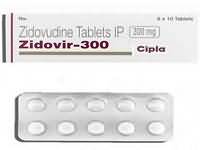CLINICAL USE
Nucleoside reverse transcriptase inhibitor: Treatment of HIV in combination with other antiretroviral drugs Prevention of maternal-foetal HIV transmission
DOSE IN NORMAL RENAL FUNCTION
Oral: 500–600 mg daily in 2–3 divided doses IV: 1–2 mg/kg every 4 hours
PHARMACOKINETICS
DOSE IN RENAL IMPAIRMENT
GFR (mL/MIN)
DOSE IN PATIENTS UNDERGOING RENAL REPLACEMENT THERAPIES
IMPORTANT DRUG INTERACTIONS
Potentially hazardous interactions with other drugs
ADMINISTRATION
Reconstition
–
Route
IV, oral
Rate of Administration
1 hour
Comments
Dilute with glucose 5% infusion to give a final concentration of 2 mg/mL or 4 mg/mL
OTHER INFORMATION
Dialysis has little effect on zidovudine, presumably because of rapid metabolism. The glucuronide metabolite (T½ =1 hour) has no antiviral activity and will be significantly removed by dialysis Patients with severe renal failure have 50% higher maximum plasma concentrations 90% of a dose is excreted renally, mostly as the glucuronide. There is substantial accumulation of this metabolite in renal failure Main risk in renal impairment is haematological toxicity
